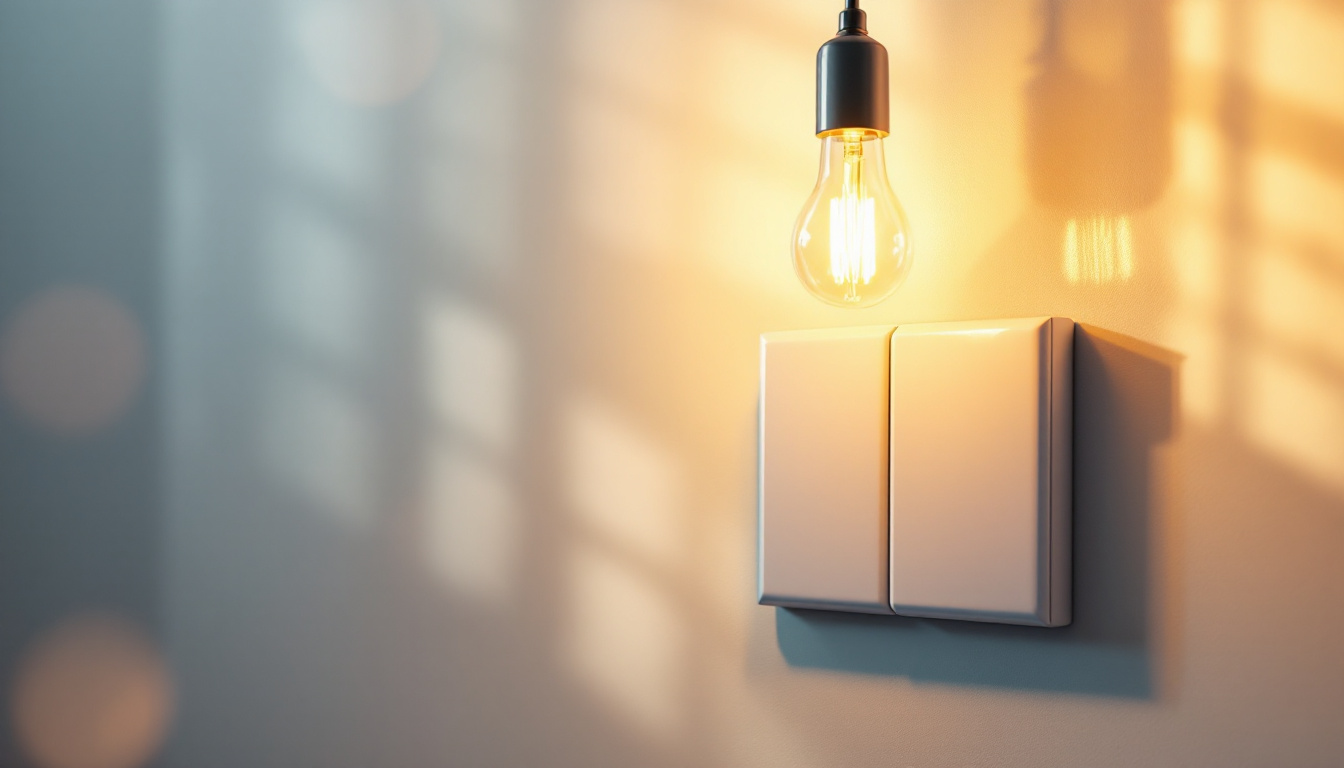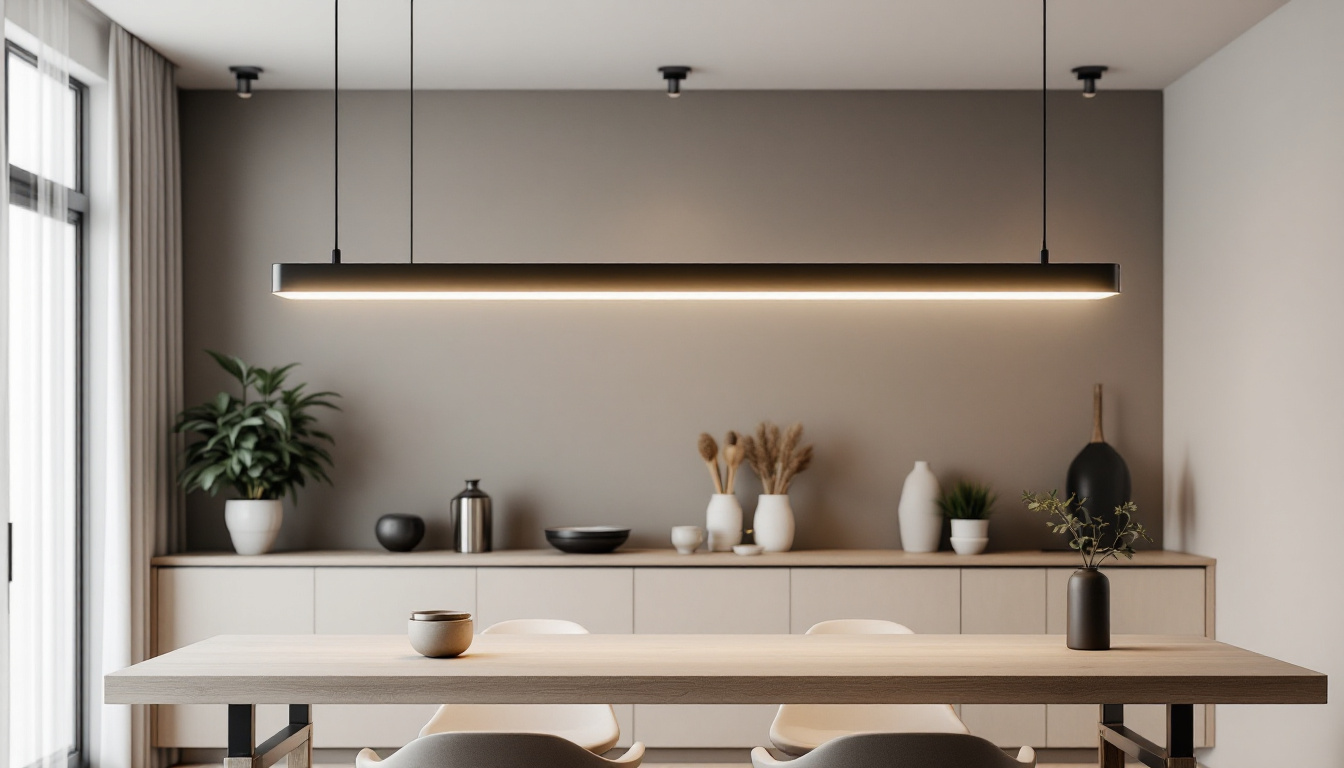
In the world of lighting design and installation, understanding the nuances of fixture placement and control mechanisms is essential for maximizing efficiency. One common scenario that lighting contractors encounter is the installation of light fixtures in conjunction with double switches. This article delves into the best practices for optimizing light fixture placement before a double switch, ensuring that both functionality and energy efficiency are prioritized.
Proper fixture placement is critical in achieving optimal lighting conditions. It not only affects the illumination of a space but also impacts energy consumption and user satisfaction. When planning the layout of light fixtures, it is essential to consider the following factors:
Every space has unique characteristics that influence lighting needs. Factors such as room size, ceiling height, and the purpose of the room must be assessed. For instance, a large open area may require multiple fixtures to ensure even light distribution, while a smaller, more intimate setting might only need a single fixture. Additionally, the color and texture of walls and furnishings can affect how light is absorbed or reflected, necessitating adjustments in fixture placement. Moreover, the orientation of windows and the amount of natural light entering a room can significantly alter how artificial lighting should be configured. A north-facing room may benefit from warmer tones to counteract the cooler daylight, while a south-facing room might require less artificial light during the day.
Effective lighting design often employs a layering technique, which combines ambient, task, and accent lighting to create a well-balanced environment. When installing fixtures before a double switch, consider how each layer can be controlled independently. This allows for flexibility in lighting scenarios, enhancing both functionality and ambiance. For example, using dimmable fixtures for ambient lighting can create a softer atmosphere, while brighter task lighting can be activated when needed. Additionally, accent lighting can be strategically placed to highlight artwork or architectural features, adding depth and interest to the overall design. Incorporating smart lighting systems can further elevate this approach, allowing users to customize their lighting preferences based on time of day or specific activities, thus fostering a more personalized and efficient use of energy.
Not all fixtures are created equal, and selecting the right type can significantly impact efficiency and performance. Lighting contractors should be familiar with various fixture types and their applications to make informed decisions. Understanding the specific needs of a space, such as the purpose of the room and the desired ambiance, is crucial in making the right choice. Additionally, considering the layout and architecture of the environment can further guide the selection process, ensuring that the fixtures not only illuminate but also enhance the overall design.
LED fixtures have become increasingly popular due to their energy efficiency and long lifespan. Compared to traditional incandescent or fluorescent lights, LEDs consume significantly less energy and produce less heat, making them a more sustainable option. When planning for a double switch setup, incorporating LED fixtures can lead to substantial cost savings over time, both in terms of energy bills and maintenance. Furthermore, LEDs are available in a wide range of color temperatures, allowing for greater flexibility in creating the desired mood or atmosphere in any given space. This adaptability makes them suitable for various applications, from cozy residential settings to vibrant commercial environments.
The design of the fixture can also influence its effectiveness. Fixtures should not only meet functional requirements but also complement the overall aesthetic of the space. For instance, recessed lighting can provide a sleek, modern look while ensuring that the light source is unobtrusive. On the other hand, pendant lights can serve as both a light source and a decorative element, enhancing the visual appeal of a room. Moreover, the choice of materials and finishes can play a pivotal role in the fixture’s integration with the surrounding decor. For example, brushed nickel or matte black finishes can add a contemporary touch, while antique brass or wrought iron can evoke a more traditional feel. The right combination of design and functionality can transform a simple lighting fixture into a statement piece that elevates the entire room.
Double switches offer the ability to control multiple fixtures or lighting zones from a single location. However, to maximize their efficiency, careful consideration should be given to how they are wired and configured.
When installing a double switch, the wiring configuration is crucial. Each switch should ideally control a separate lighting zone, allowing for tailored lighting solutions based on the time of day or activity. For example, one switch could control ambient lighting while the other manages task lighting. This setup not only enhances user convenience but also promotes energy efficiency by allowing users to turn off lights in unoccupied areas. Furthermore, proper labeling of switches can significantly improve usability, ensuring that family members or guests can easily understand which switch controls which light, thereby reducing confusion and enhancing the overall user experience.
Incorporating smart switches into the lighting design can further enhance control and efficiency. Smart switches allow users to adjust lighting levels via mobile apps or voice commands, providing an unprecedented level of customization. Additionally, they can be programmed to turn lights off automatically when a room is unoccupied, further reducing energy consumption. Lighting contractors should stay informed about the latest smart technology trends to offer clients the most effective solutions. Moreover, integrating smart switches with home automation systems can create a seamless experience where lighting responds intuitively to daily routines, such as dimming lights in the evening or brightening them in the morning. This not only adds convenience but can also contribute to a more secure home environment, as lights can be programmed to simulate occupancy when homeowners are away, deterring potential intruders.
Energy efficiency is a primary concern for both contractors and clients. Implementing strategies that reduce energy consumption not only lowers utility bills but also contributes to environmental sustainability. As the demand for energy continues to rise, finding innovative ways to enhance efficiency becomes increasingly vital. This not only helps in reducing the carbon footprint but also aligns with global efforts to combat climate change, making energy-efficient practices not just a choice, but a necessity.
One of the most effective ways to enhance energy efficiency is by maximizing the use of natural light. When planning fixture placement, consider the orientation of windows and the availability of daylight. Positioning fixtures to complement natural light can reduce reliance on artificial lighting during the day. For example, placing task lighting near windows can provide adequate illumination without the need for overhead lights. Additionally, using light-colored walls and reflective surfaces can help to distribute natural light more effectively throughout a space, further reducing the need for electric lighting. Incorporating skylights or light tubes can also bring in additional daylight, especially in areas that may not have sufficient window access.
In addition to smart switches, incorporating motion sensors and daylight sensors can significantly enhance energy efficiency. Motion sensors can automatically turn lights on or off based on occupancy, ensuring that lights are only used when needed. Daylight sensors can adjust the brightness of fixtures in response to natural light levels, maintaining consistent illumination while minimizing energy use. By integrating these technologies, contractors can create a more sustainable lighting solution for their clients. Furthermore, programmable timers can be utilized to schedule lighting based on specific needs, such as dimming lights during off-peak hours or turning them off when a space is unoccupied for extended periods. This level of control not only optimizes energy usage but also extends the lifespan of lighting fixtures, resulting in lower maintenance costs over time.
Even experienced contractors can fall victim to common pitfalls when installing light fixtures before a double switch. Being aware of these mistakes can help ensure a more successful lighting project.
One of the most frequent errors is neglecting to carefully plan fixture placement. Fixtures that are too far apart can create dark spots, while those that are too close may cause glare. Taking the time to measure and visualize the space before installation can help avoid these issues. Additionally, considering the height of the fixtures in relation to the ceiling can impact the effectiveness of the lighting.
Each client has unique preferences and requirements for their lighting. Failing to consult with clients about their specific needs can lead to dissatisfaction with the final result. Engaging clients in the design process ensures that their expectations are met and can lead to a more successful project overall. This collaborative approach can also help identify any potential issues before they arise, allowing for adjustments to be made during the installation process.
Optimizing light fixture placement before a double switch involves a careful balance of aesthetics, functionality, and energy efficiency. By understanding the unique characteristics of each space, selecting the right fixtures, and utilizing advanced control options, lighting contractors can create solutions that not only meet client needs but also enhance overall energy efficiency.
As the demand for sustainable lighting solutions continues to grow, staying informed about the latest technologies and best practices is essential for success in the industry. By prioritizing efficient designs and engaging clients in the process, contractors can ensure that their lighting installations are both effective and environmentally responsible.
In conclusion, the integration of thoughtful fixture placement with innovative control mechanisms can lead to a transformative lighting experience. By taking the time to plan and execute these installations with care, contractors can set themselves apart in a competitive market while delivering exceptional value to their clients.
Ready to elevate your lighting installations with the efficiency and style that clients love? At LumenWholesale, we provide you with the spec-grade lighting products you need to bring your projects to life. Say goodbye to local distributor markups and hello to our unbeatable wholesale prices. With our vast selection of high-quality lighting solutions, you can ensure every fixture is perfectly placed for maximum efficiency and aesthetic appeal. Plus, with free shipping on bulk orders, you get the best value without any hidden costs. Don’t compromise on quality or price. Make your next project shine and experience the best in wholesale lighting at LumenWholesale.

Discover the essential guide for lighting contractors on outdoor lights dusk to dawn.

Discover the essential insights every lighting contractor needs to know about pendant lights.

Discover the essentials of linear suspension lighting in just five minutes with this concise guide tailored for lighting contractors.

Explore how dusk until dawn lights revolutionize energy efficiency by automatically adjusting to natural light conditions.